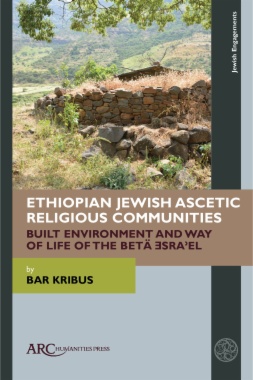The Betä Ǝsraʾel (Ethiopian Jews) have a unique history and religious tradition, one of the most fascinating aspects of which are the mäloksočč, commonly referred to as monks in scholarly and popular literature. The mäloksočč served as the supreme religious leaders of the Betä Ǝsraʾel and were charged with educating and initiating Betä Ǝsraʾel priests. They lived in separate compounds and observed severe purity laws prohibiting physical contact with the laity. Thus, they are the only known example in medieval and modern Jewry of ascetic communities withdrawing from the secular world and devoting themselves fully to religious life.
This book presents the results of the first comprehensive research ever conducted on the way of life and material culture of the ascetic religious communities of the Betä Ǝsraʾel. A major part of this research is an archaeological survey, during which these religious centres were located and documented in detail for the first time.
- COVER
- Contents
- List of Illustrations
- Acknowledgements
- Part 1. Introduction: The Ascetic Religious Communities of the Betä Ǝsraʾel (Ethiopian Jews)
- Chapter 1. The Rise and Decline of Betä Ǝsraʾel Monasticism
- Chapter 2. The Archaeological Survey of Betä Ǝsraʾel Monastic Centres
- Part 2. The Roles and Practices of Betä Ǝsraʾel Monks
- Chapter 3. Roles of Religious Communities in Ethiopian Society
- Chapter 4. Leadership Roles of the Monks
- Chapter 5. Religious Education and Initiation
- Chapter 6. Purity Laws and Ascetic Practices
- Chapter 7. Economic Aspects of Monastic Life
- Chapter 8. Betä Ǝsraʾel Female Ascetics
- Part 3. Betä Ǝsraʾel Monastic Centres: General Characteristics
- Chapter 9. Monastic Compounds and Monastic Life in Solomonic Ethiopia
- Chapter 10. The Layout and Components of Betä Ǝsraʾel Monastic Centres
- Chapter 11. Typology of Monastic Sites
- Chapter 12. Monastic Prayer Houses
- Part 4. Hoḫwärwa: The First Betä Ǝsraʾel Monastic Centre
- Part 5. The Monastic Centres of the Səmen Mountains and Wägära
- Chapter 13. Səmen Mənaṭa
- Chapter 14. Qolqwaločč (Šowada)
- Chapter 15. Abba Rid
- Chapter 16. Abba Gan (Gäntaba)
- Chapter 17. Bänkär and Qärn Amba
- Chapter 18. Čärbita
- Chapter 19. Doro Wəḫa
- Part 6. The Monastic Centres of Dämbəya and Säqqält
- Chapter 20. Tracing the Development of Monastic Communities in Dämbəya and Säqqält
- Chapter 21. Gwang Ras
- Chapter 22. Gǝǧen
- Chapter 23. Mǝdraro
- Chapter 24. Č̣aqo Abba Däbtära
- Chapter 25. Zärʾa Wärqe and the Other Dwelling Places of Abba Mähari
- Chapter 26. Amba Gwalit
- Chapter 27. Guraba
- Chapter 28. Mänge, Täbibär, Täybär, and Ačarge
- Part 7. Understanding the Essence of Betä Ǝsraʾel Monasticism
- Conclusions
- Bibliography
- Index

